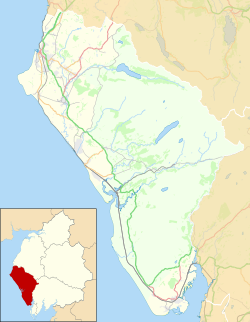 | |||||
| General information | |||||
| Location | Corkickle, Cumberland England | ||||
| Coordinates | 54°32′29″N3°34′55″W / 54.5414869°N 3.5820824°W | ||||
| Grid reference | NX977174 | ||||
| Owned by | Network Rail | ||||
| Managed by | Northern Trains | ||||
| Platforms | 1 | ||||
| Tracks | 1 | ||||
| Other information | |||||
| Station code | CKL | ||||
| Classification | DfT category F2 | ||||
| History | |||||
| Original company | Whitehaven and Furness Junction Railway | ||||
| Pre-grouping | Furness Railway | ||||
| Post-grouping | London, Midland and Scottish Railway British Rail (London Midland Region) | ||||
| Key dates | |||||
| 19 July 1849 | Opened as Whitehaven Newtown | ||||
| 3 December 1855 | Resited and renamed Whitehaven Corkickle | ||||
| 1957 | Renamed Corkickle | ||||
| Passengers | |||||
| 2020/21 | |||||
| 2021/22 | |||||
| 2022/23 | |||||
| 2023/24 | |||||
| 2024/25 | |||||
| |||||
| |||||
Corkickle railway station is a railway station serving the suburb of Corkickle near Whitehaven in Cumbria, England. It is on the Cumbrian Coast Line, which runs between Carlisle and Barrow-in-Furness. It is owned by Network Rail and managed by Northern Trains. The station opened on 3 December 1855, [1] and is at the southern end of the 1,219 m (3,999 ft) tunnel from Whitehaven. Between 1855 and 1957, the station was known as Whitehaven Corkickle. [1] [2]


